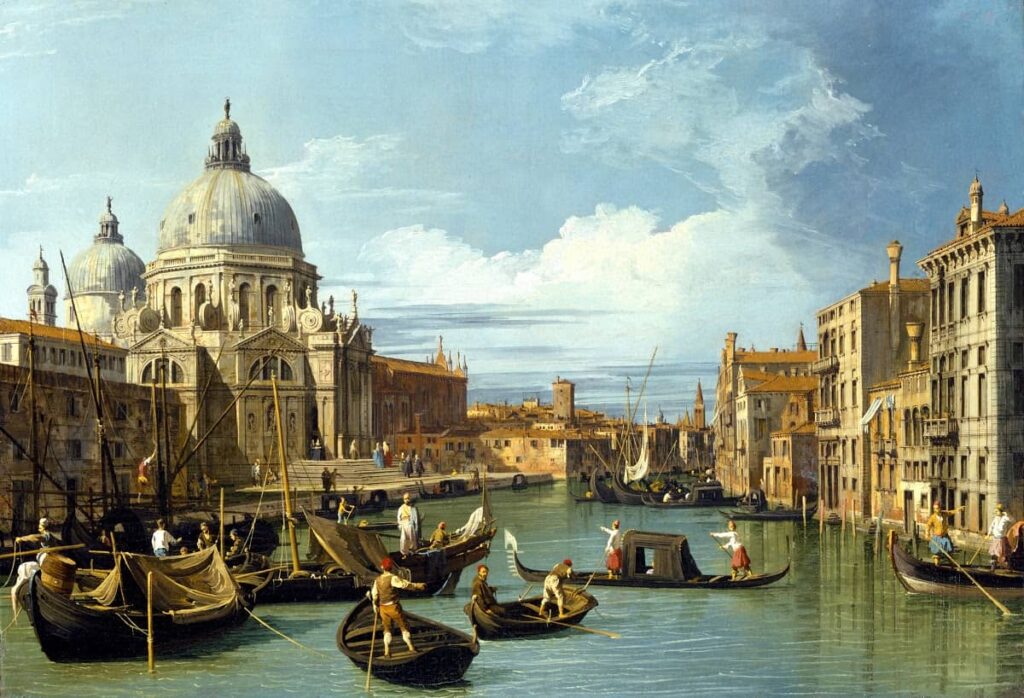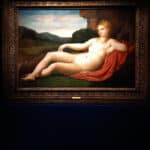Grand Tour. Dream of Italy from Venice to Pompei.
From 19 November 2021 and until 27 March 2022, at the Gallerie d’Italia in Milan, it is possible to visit the exhibition Grand Tour. Dream of Italy from Venice to Pompeii.
The exhibition focuses on the famous phenomenon widespread in the European nobility and bourgeoisie between the end of the seventeenth century and the first half of the nineteenth century. As clearly explained in the presentation at the exhibition, the journey was not only the prerogative of the elite, but also of intellectuals, writers and artists who wanted to complete their educational path.
The exhibition therefore wants to place the accent precisely on the works and representations born in this context, both by the hand of foreign and Italian artists, which have contributed to strengthening the identifying imaginary of Italy, with its traditions, its customs and its landscapes, such as the “Bel Paese”.
In the exhibition itinerary the many aspects of the Grand Tour are presented, from the cities and places favorite travel destinations, to the themes that most fascinated travelers.
The various sections often combine works by artists of different nationalities, showing the different sensibilities of the personalities who approached similar subjects. Curiously it emerges that the atmospheric and luministic data often attracts attention, with paintings that focus on the rendering of the elements, even being able to dedicate an entire room to the countless representations of the erupting Vesuvius, a show that is certainly scenographic and capable of striking the spectators.
A section is also dedicated to portraits, a much older genre, but which in this era is experiencing a renewed fortune linked to the grand tour. Above all the noble classes, passed from requiring commendable portraits, in favor of a more natural portrait, where the portrayed was placed in a context set by ruins and classical buildings. The new portrait in these ways became a real status symbol and its main representative was Pompeo Batoni, in great demand by foreign clients.
It is interesting to note that in the exhibition ample space is given not only to painting and sculpture, but also to all those artistic forms, conventionally defined as the so-called decorative arts.
“Art objects and luxury manufactures”, precious souvenirs that were sought after and requested by wealthy travelers, to be brought back to their homeland as a testimony of their stay in Italy.
In the main cities that are the destination of pilgrimages, shops specialized in the production of these objects developed and established themselves, for example in Rome there were the famous bronze painters Luigi and Giuseppe Valadier, the first appointed by Pope Pius VI superintendent of the restoration of ancient bronzes and bindings. of the cams in the Sacred and Profane Museums. The exhibition offers tubs with vases typical of their production, which saw the mixture of refined marbles, such as white, green and porphyry and gilded bronzes of high quality and refined designs.
Florentine and Roman committed plans were also in great demand, real samples of stone species, continuing the traditions of factories, such as that of the Raphaeles. Also specializing in real compositions, no longer purely religious, but also ancient ruins and views of the city, real postcards ante litteram, and still lifes or compositions, such as the pair of floors with antique vases, on a model by Antonio Cioci.
Another technique that established itself in the mid-eighties of the eighteenth century in Rome was that of the biscuit, thanks to the manufacture of Giovanni Volpato. Here then is a centerpiece of his own production, with a Triumph of Bacchus and Ariadne, Apollo and the Muses, a real decorative complex that best exemplifies the appreciation for classical antiquity but at the same time the search for scenography. and wealth with which they wanted to amaze the guests.

As it emerges, this exhibition aims to highlight the common thread between classical antiquity and contemporary production. If the appreciation of Greco-Roman sculptures, belonging for centuries to the most important collections, is well known, in the eighteenth century the discoveries of the cities buried by Vesuvius also brought to light everyday objects, with votive and apotropaic purposes, domestic furnishings, immediately taken as a model, reproduced or to be inspired by for the new productions intended for travelers. The rediscovered antiquities, often mutilated, were entrusted to sculptors specialized in integrative restorations, which was often done in a philological, but also somewhat arbitrary way. On display this trend is presented, combining ancient works with each other, a characteristic
and widely reproduced brazier on a tripod with itiphallic satyrs, with others of modern production and the aforementioned integrative restoration interventions. Interesting is the statue of Artemis Ephesia, an alabaster sculpture from the 2nd century AD, mutilated in the face, hands and feet, completed by the aforementioned Valadier; or the rhyton reinstated by Piranesi’s atelier with a boar-headed beak.
This exhibition offers an excursus through a very widespread phenomenon, a mirror of the society and culture of these years and which in turn has influenced philosophy and contemporary art.




